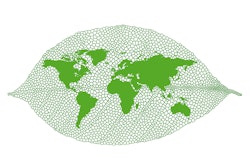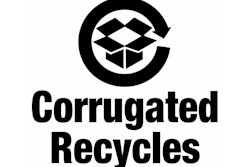
A new report from Technavio forecasts that the global bioplastics market will grow at a CAGR exceeding 29% from 2016 through 2020. The report, “Global Bioplastics Market 2016-2020,” covers the present scenario and growth prospects of the global bioplastics in the key regions of Europe, North America, Asia-Pacific, and the rest of the world. Notes Technavio, even though Europe held the largest share of the global bioplastics market in 2015, the report predicts its share to decline by the end of 2020.
The report indicates that four factors are contributing to the growth of the global bioplastics market:
- The emergence of bio-based and renewable raw materials
- Changing consumer preference toward eco-friendly packaging
- The growing prominence of bioplastic
- The adoption of green procurement policies
The emergence of bio-based and renewable raw materials
Notes Technavio, the global bioplastics market is driven by the emergence of renewable resources, biomass, and bio-based raw materials such as starch and vegetable crop derivatives. In 2015, bio-based bioplastics accounted for more than 80% of the global bioplastics market. The use of bioplastics in numerous applications such as packaging and domestic goods has enabled plastics manufacturers to reduce the overdependence on petroleum-based plastics.
Biomass includes grass, trees, plants, and other organic materials such as animal meat and other tissues that decompose by the activities of microorganisms. This has shifted the trend of plastic manufacturers toward bioplastics based on renewable sources. Raw materials required for the production of bioplastics are renewable in origin, and the supply is abundant globally compared to petroleum and fossil-based raw materials. Therefore, the global outlook for bio-based raw materials for plastics is significantly more positive than that of petroleum-based raw materials.
Changing consumer preference toward eco-friendly packaging
According to Chandrakumar Badala Jaganathan, a lead analyst at Technavio for research on bio-chemicals and bio-materials, “Increasing demand of consumers for eco-friendly packaging is shifting the focus of major plastics manufacturers and packaging vendors toward bioplastic packaging. The need to conform with government regulations is forcing vendors to focus on manufacturing bioplastics and map out their products in the export market.”
In 2015, a global consumer survey conducted on consumer preference on food packaging showed that on an average, more than 25% of consumers were of the opinion that food packaging vendors should concentrate more on the development of green product packaging. This has forced vendors to consume more green packaging labels as a strategy for branding as well as customer acquisition. The increasing acceptance of consumers for sustainable packaging and green products will drive the bioplastics market during the forecast period.
The growing prominence of bioplastic
Plastics take approximately 100 years to break down or decompose, and so they lie in landfills for an extended period. Bioplastics break down and are absorbed back into the environment. In addition, Technavio notes, the rate of decomposition of biodegradable bioplastics by the activities of microorganisms is much faster than that of traditional plastics. For instance, biodegradable starch-based plastics break down by approximately 65% within three months. “Increasing landfills and waste piles have emerged as serious environmental hazards that have adverse effects on the environment. This has led to the increase in the consumption of bioplastics,” adds Chandrakumar.
The adoption of green procurement policies
Government measures toward purchasing sustainable and eco-friendly products are another factor driving the market for bioplastics. In addition, manufacturers are also increasingly striving toward developing sustainable solutions, which have minimum environmental hazards for their customers. For example, in Mexico, in August 2009, all non-biodegradable plastic bags were officially banned. Under the 2005 Law of Agriculture Policy, the agriculture ministry of France began promoting bioplastics and was aiming to have all plastic carrier bags as biodegradable by 2015.
Such legislation policies have become more frequent in recent times, especially in Europe where environmental awareness is high. For instance, the Green Dot system is used for traditional packaging wherein companies contribute a certain fee to the cost of recycling packaging waste. To increase the use of bioplastics, Germany has exempted bioplastic packaging from Green Dot license fees, fueling the demand for bioplastics. In addition to legislations curbing the use of traditional plastics, governments are also offering incentives such as tax exemptions and certifications to vendors that produce and promote green materials.






















